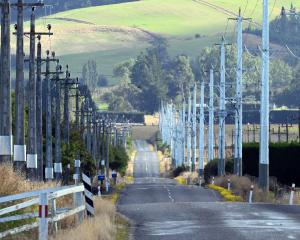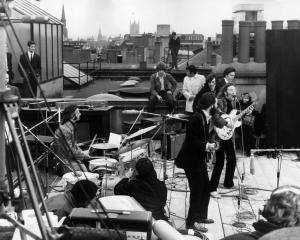Rhyme in poetry is a relatively recent innovation, Emma Neale points out.
The phrase "poetry is meant to rhyme" is a bit like saying "cats are meant to be black".
Our world is so much wider, richer and more various than that.
Poetry in English has always used a healthy range of structuring and musical principles.
It's never been the job of rhyme alone to carry the definition of poetry.
Rhyme didn't fully enter English poetry until the High Middle Ages (think Chaucer).
It was brought in under the influence of French troubadour poets (who were in turn influenced by Arabic), and we could say it has been a point of artistic argument ever since.
The great 17th-century poet Milton said in his preface to Paradise Lost that rhyme was "no necessary Adjunct or true Ornament of Poem or good Verse, in longer Works especially, but the Invention of a barbarous Age, to set off wretched matter and lame Meter" - in other words, he felt it was used to disguise thin subject matter and a poor sense of rhythm.
Not that rhyme - and regular metre - don't have powerful appeal.
The first thing we hear is the rhythm of the mother's heartbeat in the womb.
We learn to master language through the principles of corresponding sounds - the world says "da", and "ma": we echo it back, in the long, slow rhyme of learning to talk.
A return to childhood certainties is perhaps what many readers are unconsciously seeking when craving the loud, clear bell of end rhyme.
The patterns of rhyme and metre may set up, and fulfil, expectations; it's an enjoyable re-enactment of hopes realised, in artistic form.
Yet readers - and writers - over the centuries have not only sought the comfort and security of traditional prosody: they've also sought adventure and novelty, in the form of variation, spontaneity, inventiveness.
Readers might remember that Shakespeare often wrote in blank verse - unrhymed iambic pentameter - and yet he's known as one of our finest literary forefathers.
Poets who are able to use rhyme skilfully, free of cliche and the thump of bathos, might be the Red Checkers of literature: dazzling, dexterous, daring, and yet just as the RNZAF aerobatics team aren't the only kind of pilot, rhymesters aren't the only kind of poet.
Contemporary poetry uses a full, bristling quiver of techniques to add aural music to the literary form: e.g. assonance, sibilance, alliteration, onomatopoeia, consonance, repetition of all kinds - from song-like refrains, to cyclical teuletons (or repeated end words: see the sestina form in today's offering in the Monday Poem slot).
Yet because poetry is often a printed medium, it also uses line ends and white space to articulate all the qualities of silence, and to add narrative or rhythmic suspense and delay.
It may use visual mimesis to try and convey something of its subject matter (for a well-known local example, see Hone Tuwhare's poem Rain, which falls down the page in a thin, steady stream).
It may use what we might call eye rhyme: words that look on the page as if they should chime to the ear, but which don't.
Beyond the necessary limits of newspaper layout, it also offers all kinds of more challenging visual, typographical experiments, and in the digital age, experiments with the relationship between the moving image and language.
Of course, when we talk about poetic writing, we're also referring to an intensity of descriptive skill: powerful, original and evocative metaphors, similes and analogies, alive to the five senses.
If readers are genuinely interested in the myriad ways contemporary poets have used the flexibility of poetic form, they could look at the recent publication 99 Ways into New Zealand Poetry, by Paula Green and Harry Ricketts; or two excellent anthologies - Staying Alive and Being Alive, edited by Neil Astley.
Or they could go to the poetry section of the library or UBS, and browse.
And read aloud: listen for the music that comes trickling in through channels other than rhyme.
A warning, though: it's addictive, and mind-opening.
You might start seeing cats tricked out not just in black, but in stripes, spats and soft suede shoes, and with eyes like hot gold foil.
Dr Emma Neale is the editor of the Otago Daily Times Monday Poem slot. She is a poet, creative writing tutor and novelist.











